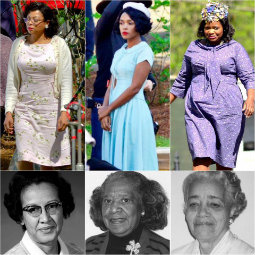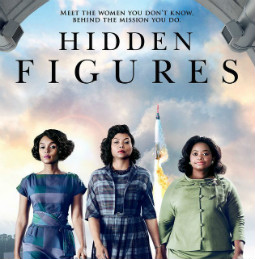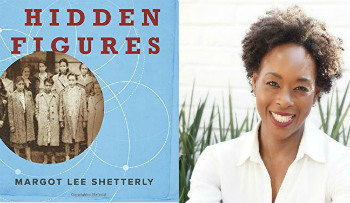The only thing more incredible than the story of these women is the fact that our recent history can be as effectively hidden as our ancient history.
When I watch a movie about the pharaohs of Egypt, life in the antebellum American South, the empires of West Africa, or the French Revolution; I expect to learn more than I already knew. I expect to be exposed to new people, events, and ideas.
1960s America on the other hand…until this weekend, I liked to think that I knew the important moments and heroic icons of that era in this nation’s history. I was wrong.
Turns out that before there were computers, there were women. Apparently, for the 35 years before IBM built NASA’s first computer, women were the brains, processors, and calculators behind the engine of American innovation and ingenuity.
As explained in NASA’s archive records:
Before the development of electronic computers, the term “computer” referred to people, not machines. It was a job title, designating someone who performed mathematical equations and calculations by hand. Over the next thirty years, hundreds of women, most with degrees in math or other sciences would join those first five computers at Langley…Reading, calculating and plotting data from tests in Langley’s wind tunnels and research divisions, human computers played an integral role in both aeronautical and aerospace research at the lab from the mid-1930s into the 1970s, helping it keep pace with the high output demanded by World War II and the early space race. Along with their contribution to the field, Langley’s computers also stood out for another reason: they were all women.
These and many other truths were unearthed by Margot Lee Shetterly, whose book Hidden Figures tells the stories of Mary Jackson, Dorothy Vaughn, and Katherine Johnson; and inspired the new movie of the same name which stars Taraji P. Henson, Janelle Monáe, and Octavia Spencer.
Her book and this movie are a gift to the American public on so many levels. One of the important services of these works is to provide us with an accessible introduction to the increasingly discussed concept of intersectionality. The movie Hidden Figures is a perfect example of how walking in overlapping identities – in this case, being a Black American and an American woman – can present challenges and opportunities that are distinct from those experienced by people who identify with only one of those identities.
Again, from the NASA archives:
“During the 1940s, Langley began recruiting African-American women with college degrees to work as computers. Initially grouped in a segregated section, the “West Area Computers” processed data sent to the pool and also joined sections on a temporary basis when additional help was needed…The first African-American computers did the same work as their white counterparts, but in a period when segregation was policy across the South and in the U.S. armed services, they also encountered segregated dining and bathroom facilities, along with barriers to other professional jobs.”
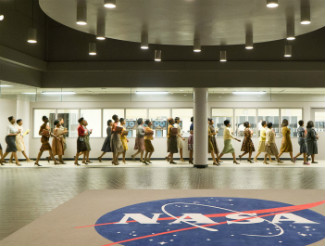
There were several lines in the movie that are as relevant for our work in the coming years as they were during the ’60s:
“You have to go…you have to see what she becomes.”
- A pivotal moment early in the film where a young person’s gift has been identified, affirmed, and watered by a family and by a community. How can we all do a better job of nurturing the intellectual, emotional and social gifts of our young people?
“I’m a Negro woman, I’m not going to entertain the impossible.”
- Real talk and real hope are two sides of the coin of life for people of the African diaspora in general, and African-American women in particular. This skill will be in even higher demand in the coming year.
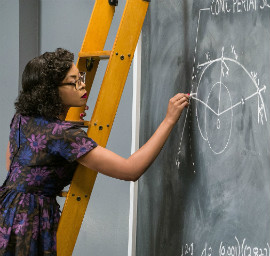
“I have no idea where your bathroom is.”
- Sprints to the bathroom function like car chase scenes in this movie. They are visceral reminders of the absurd and dehumanizing side effects of the cancer of racism.
“I didn’t want to run off without saying hello.”
- Perhaps I shouldn’t be surprised that the legacy of the late American space pioneer and astronaut John Glenn emerges from this film unstained by the racial beliefs which shackled so many of the other White characters portrayed in this film. But the actions of Mr. Glenn in this scene remind us of how one person can effect change by choosing their humanity over their privilege.

“Are you a Russian spy?” / “I’m not…Russian.”
- Such a timely exchange given the last 12 months in this country. One of the many Jedi mind tricks of the ruling class in America has been to maintain an aura of doubt and suspicion around the loyalties of Black Americans. This ability to convince other Americans that Black excellence which challenges the narrative of racial inferiority must be the result of treason (e.g. “Obama was born in Kenya!”) has done much to hinder political coalition-building among working class people in this country.
“There you have it…no more colored restrooms, no more white restrooms, just damn toilets…here at NASA, we all pee the same color.”
- This line and the scene which it concluded received applause and cheers in the theater I was in. I was surprised and saddened by this.
For me, this scene was a demonstration of the “we elected a Black president, there’s no more racism, we are a post-racial society” mentality which created blind spots in experts and citizens across the political spectrum. These blind spots were the source of the many social and political pile-up crashes we witnessed as a country in 2016.
I pray that we cease-and-desist with the notion that any single magnanimous speech or gesture will dismantle what has taken the Western world 500 years to construct.
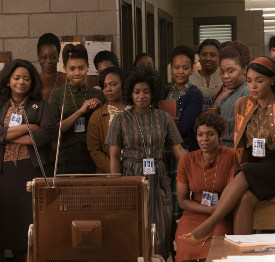
“I’m not accepting reassignment unless my ladies are coming with me.”
- If the previous line was the most discouraging for me, this one was the most inspiring. This is the distilled truth that is echoed by the grandchildren of the Hidden Figures generation, some of whom have taken to the rallying cry: “Black Lives Matter!” The essential takeaway from this powerful scene is that your freedom is attached to their freedom. There’s something deeply rooted in the traditions of West Africa in this desire to see all of your people get free. Indeed, it is one of Black America’s many gifts to this nation. I am grateful to now know about three more women who were gifts to our nation as well.
– Day G.
Creator & Curator, Class of Hope & Change documentary
